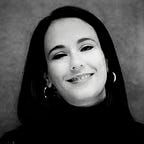Professional Organizer Vs. Mari Kondo
It has taken me an excessive amount of time to write this piece. I had allowed the cloud of dust to settle. In the meantime, I have been learning about the subject, filling in the information gaps where I deem appropriate. So here is what I’ve got on Professional Organizer Vs. Mari Kondo.
The way I see it, Mari Kondo helps you eliminate the clutter and teaches you how to fold your shirts and underwear in a particular way. Still, her method is not about professional organization. Some KonMari-certified consultants are Professional Organizers. But more than following the KonMari process is needed to call someone a Professional Organizer.
The Need That Each Serves
Please do not take me wrong. I’m not at war with Mari Kondo. On the contrary. She brings a lot of attention and value to our industry. But having said that, she serves a specific portion of the market. What she does is different from what a Professional Organizer does.
Choose the KonMari method or a Professional Organizer if you need to declutter your space. However, you need a professional organizer to find the root cause of disorganization and implement systems that maintain order. Unfortunately, Mari Kondo can’t help you there.
Let me present a couple of criteria to compare how the KonMari method differs from the Professional Organizer’s approach.
Scope and Focus
Organizers typically follow a method that involves evaluating, classifying, purging, allocating, containerizing, and labeling spaces. As part of this process, they emphasize improving the client’s productivity and the space’s efficiency. To achieve that, Organizers implement systems and processes.
On the other hand, the KonMari method focuses on decluttering the home using the classification of items. Her process does not address the organizing details. Indeed, Mari Kondo does not focus on systems or methods to enhance the efficiency of the space or maintain the order achieved.
Ideal Clientele
Mari Kondo does not address the root cause of disorganization in a home or a person’s life. Therefore, it is logical to presume that her process does not work for people whose clutter problem is “not about the stuff.” Should these individuals follow the KonMari method, the chances are that shortly after, they will be back on square one.
Organizers train in a wide variety of areas to help their clients best. Therefore, looking for an Organizer best suited to each person’s needs is essential. A good Professional Organizer seeks to find out the root cause of the problem, transfers skills, and designs systems to make their client’s life easier.
Aesthetic Value and Design
The KonMari method emphasizes reusing what the client has available to organize and containerize the client’s items after decluttering. The process expressly avoids the purchase of containers and systems. Not buying additional equipment or supplies could be advantageous when considering project costs. However, things have recently changed with the merger between Mari Kondo and The Container Store.
Nevertheless, as humans, we are more inclined to maintain the organization of areas that look neat and that are pleasing to the eye. An organized place should be decluttered and functional but also aesthetically pleasing. An organizing design does not need expensive organizing products to look fantastic. However, it requires careful consideration of style and form. And random repurposed containers might not achieve great-looking results.
Room by Room Vs. Categories
One of the fundamental KonMari principles is organizing the whole house using a process based on categories, placing together all items from the same type to evaluate them simultaneously. Some see this method as more definite, fast, and conclusive than organizing room by room.
But Professional Organizers agree with the organizing by categories! One hundred percent! We all want to place similar items together before the client decides what to keep. The difference lies in what happens next with each category once the client has decided what to keep.
Organizers Go Further
Organizers take it a step further, clarifying the purpose of each room to assign items to their logical place. But yes, we completely agree that it should be a whole-house approach.
And the whole-house approach is inevitable anyway. People love to spread their things all over the home, regardless of item type or home space purpose. So, we must search the whole house to combine all items in the various categories.
Once And For All?
As they say, the KonMari process is a “once-and-for-all solution.” But organizing is a life skill. Habits must be learned and exercised throughout life to keep an organized space.
The order does not magically happen “once and for all.” People change, fail, recover, let go, and come back. We are more complex than “once and for all.” Without addressing disorganization’s root causes and the human condition, how can anyone sustain the “once and for all” claim?
When clients work with a Professional Organizer who shows them how much easier life can be by using the “logical place for things” and the “one home per category of items” approach, they usually adopt new habits.
In Conclusion
We are not opposed to the KonMari method — it works in specific situations and for a particular type of client. However, people should understand the fundamental differences between the KonMari way and what Professional Organizers do.
It is time that people needing organization services stop thinking they don’t need a Professional Organizer because they read the KonMari book. Those requiring a Professional Organizer will see no progress with the KonMari method. On the other hand, people who do not grapple with disorganization or any underlying clutter situation will be happy, experiencing joy with what they keep and gratefully saying goodbye to their discards.
